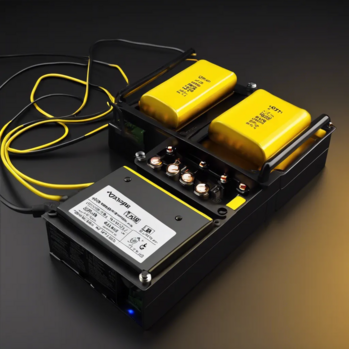How to charge LiPo

Lithium polymer (LiPo) batteries are an integral component in modern electronic systems, including unmanned aerial vehicles, radio stations, mobile devices and specialized portable electronics. Due to their high energy density and low weight, LiPo batteries have become widely used where compactness and high-power energy supply are crucial. However, correct operation requires compliance with a series of technical requirements to ensure safety and extend service life.
Constructive specialties of LiPo batteries
LiPo batteries belong to a family of lithium-ion batteries, featuring improved mechanical flexibility and the ability to deliver high currents. They are optimal for systems where minimal weight and high discharge capacity are a priority.
Main parameters:
- Nominal voltage: 3.6-3.7 V per cell. Operating value range: 3.2–4.2 V.
- Capacity: measured in mAh and determines the energy reserve.
- Discharge current (C rating): indicates the maximum permissible load without the risk of damage. Example: a 2000 mAh battery with a rating of 25C allows a safe load of up to 50 A.
- Charging current: standard - 1C, for some models an increase is possible thanks to advanced technologies.
Principles of correct charge
Usage of specialized chargers
For charging, the only devices used are the ones that are designed to work with LiPo batteries. They provide stable management of voltage and current, minimizing overheat risk and cell destruction.
Cell balancing
Balancing charge is obligatory, it provides equal charge of all cells in a battery pack. Balance disruption leads to worsening of the working characteristics and decreasing life service.
Temperature control
Charging process is done with the temperature of +15 °C to +30 °C. Charging outside this temperature range creates capacity decrease and opens up a risk of thermic destruction.
Excluding charge of damaged batteries
Before connection, a visual control must be done to detect swelling, cracks, leaks. Damaged batteries are to be utilized.
Charge level control
Charging above 4.2V is forbidden. Overcharge leads to irreversible damages, swelling and combustion.
Practical steps of charging
Battery connection
Before charging is started, connectors are checked for damage. Suitable connectors are used to eliminate short circuits and thermic damage.
Choice of charging mode
The device is set in LiPo Balance mode with setting the current as 1C from battery’s capacity, unless the manufacturer recommends otherwise.
Monitoring the process
Constant temperature control is required for both the battery and the charger. If symptoms of overheat are detected, charging is interrupted immediately till the temperature is normalized.
Disconnecting after end of charge
After the process is finished, battery is immediately disconnected. Leaving the battery on charge without control is prohibited.
Compliance with the listed requirements significantly reduces the risks associated with the use of LiPo batteries and contributes to the stable operation of electronic equipment. Competent handling of battery power sources ensures the reliable operation of the entire system, be it an aircraft, a radio communication system or other high-tech development
